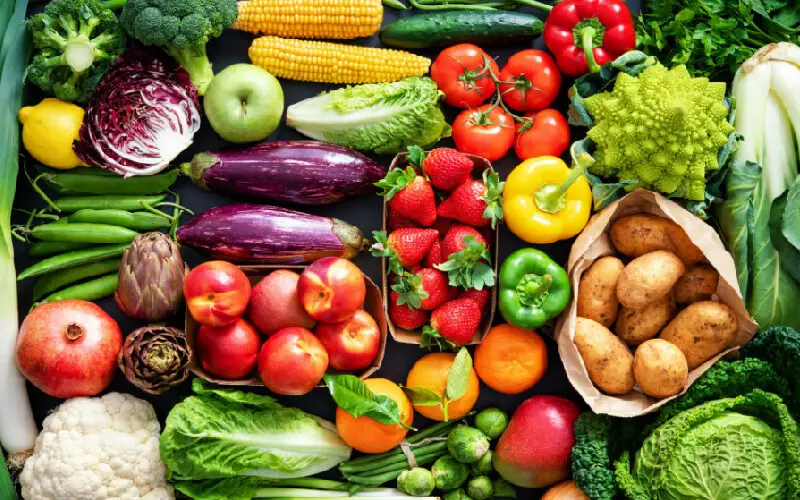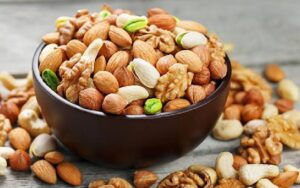Plant Fibers: Your Best Ally in the Fight Against Extra Pounds

Plant fibers
In the quest for weight loss and improved health, many people overlook one of the most effective and natural tools available: plant fibers. These dietary components offer a range of benefits that can aid in weight management and overall well-being. This comprehensive guide will explore the role of plant fibers in fighting extra pounds, the different types of plant fibers, and practical tips for incorporating them into your diet.
Click the text to discover the best tips for exercise, nutrition, and top-notch NIKE gear
Understanding Plant Fibers
What Are Plant Fibers?
Plant fibers, also known as dietary fibers, are non-digestible carbohydrates found in plant-based foods. Unlike other carbohydrates, fibers are not broken down and absorbed by the digestive system. Instead, they pass through the digestive tract, providing various health benefits along the way. Plant fibers can be classified into two main types: soluble and insoluble fibers.
Types of Plant Fibers
Soluble fibers dissolve in water to form a gel-like substance in the digestive tract. They can help lower blood cholesterol and glucose levels. Foods high in soluble fibers include oats, beans, apples, and citrus fruits. Insoluble fibers, on the other hand, do not dissolve in water. They add bulk to the stool and promote regular bowel movements. Foods high in insoluble fibers include whole grains, nuts, and vegetables.
The Role of Plant Fibers in Weight Loss
Satiety and Reduced Appetite
One of the primary ways plant fibers aid in weight loss is by promoting satiety. High-fiber foods tend to be more filling than low-fiber foods, which can help reduce overall calorie intake. Soluble fibers, in particular, can slow the digestion process, leading to a prolonged feeling of fullness.
Caloric Density and Weight Control
Plant fibers contribute to weight control by lowering the caloric density of foods. High-fiber foods typically have fewer calories for the same volume compared to low-fiber foods. This means you can eat a larger volume of food without consuming too many calories, making it easier to maintain a calorie deficit for weight loss.
Health Benefits Beyond Weight Loss
Improved Digestive Health
In addition to aiding weight loss, plant fibers play a crucial role in maintaining digestive health. Insoluble fibers help prevent constipation by adding bulk to the stool and promoting regular bowel movements. Soluble fibers act as prebiotics, feeding the beneficial bacteria in the gut, which can enhance gut health and overall digestion.
Blood Sugar Regulation
Plant fibers can also help regulate blood sugar levels, making them particularly beneficial for individuals with diabetes or those at risk of developing the condition. Soluble fibers slow the absorption of sugar, preventing rapid spikes and crashes in blood sugar levels. This can help improve insulin sensitivity and manage blood glucose levels effectively.
Sources of Plant Fibers
Fruits and Vegetables
Fruits and vegetables are excellent sources of both soluble and insoluble fibers. Berries, apples, pears, and citrus fruits are particularly high in soluble fibers, while vegetables like broccoli, carrots, and Brussels sprouts provide a good mix of both types. Including a variety of fruits and vegetables in your diet ensures you get a balanced intake of plant fibers.
Whole Grains and Legumes
Whole grains and legumes are rich sources of plant fibers. Foods like oats, brown rice, quinoa, and barley are packed with soluble fibers, while legumes such as beans, lentils, and chickpeas are high in both soluble and insoluble fibers. Incorporating these foods into your meals can significantly boost your fiber intake.
Practical Tips for Increasing Fiber Intake
Gradual Introduction
When increasing your fiber intake, it’s important to do so gradually. A sudden increase in fiber can cause digestive discomfort, such as bloating and gas. Start by adding small amounts of high-fiber foods to your diet and gradually increase the quantity over a few weeks. This allows your digestive system to adjust.
Hydration
Drinking plenty of water is essential when increasing fiber intake. Fibers absorb water, which helps them move smoothly through the digestive system. Adequate hydration prevents constipation and ensures that the fibers can effectively aid in digestion and bowel regularity.
Delicious High-Fiber Recipes
Fiber-Packed Smoothies
Start your day with a high-fiber smoothie that is both delicious and nutritious. Blend together a mix of berries, spinach, chia seeds, and a banana for sweetness. Add a scoop of protein powder and a cup of almond milk or water to achieve your desired consistency. This smoothie is not only rich in soluble fibers but also provides a burst of antioxidants and vitamins.
Hearty Bean and Veggie Soup
A hearty bean and vegetable soup can be a perfect high-fiber meal for lunch or dinner. Use a variety of beans such as black beans, kidney beans, and chickpeas, combined with an array of vegetables like carrots, celery, and tomatoes. Season with garlic, cumin, and a touch of chili powder for flavor. Serve with a side of whole-grain bread to boost your fiber intake even further.
Plant Fibers and Metabolism
Boosting Metabolic Rate
Plant fibers can indirectly boost your metabolic rate by promoting a healthy digestive system. A well-functioning digestive system ensures that nutrients are absorbed efficiently and waste products are eliminated regularly. This, in turn, supports optimal metabolic function.
Fiber and Thermogenesis
Certain high-fiber foods can enhance thermogenesis, the process by which the body burns calories to produce heat. For example, consuming high-fiber vegetables like broccoli and cauliflower can slightly increase your body’s energy expenditure, helping with weight management.
The Role of Plant Fibers in Reducing Cholesterol
Soluble Fibers and Cholesterol Levels
Soluble fibers, such as those found in oats and flaxseeds, have been shown to lower LDL (bad) cholesterol levels. They bind to cholesterol particles in the digestive system and help remove them from the body, preventing them from being absorbed into the bloodstream.
Heart Health Benefits
By reducing cholesterol levels, plant fibers contribute to improved heart health. Lowering LDL cholesterol reduces the risk of developing cardiovascular diseases, such as heart attacks and strokes. Including fiber-rich foods in your diet can be a proactive step towards maintaining a healthy heart.
Psychological Benefits of High-Fiber Diet
Improved Mood and Mental Health
A diet high in plant fibers can have positive effects on mental health. The gut-brain axis, a communication network that links the gut and the brain, plays a significant role in mental well-being. Soluble fibers act as prebiotics, nourishing the gut microbiota, which can produce neurotransmitters like serotonin that influence mood and mental health.
Stress Reduction
Regular consumption of high-fiber foods can also help reduce stress. Fiber-rich diets are associated with lower levels of inflammation in the body, which is linked to chronic stress and anxiety. By reducing inflammation, plant fibers can help mitigate stress and promote a sense of calm.
Myths and Misconceptions About Plant Fibers
Fiber Causes Weight Gain
One common misconception is that high-fiber foods can lead to weight gain due to their carbohydrate content. However, plant fibers are not digested and absorbed like other carbohydrates. Instead, they pass through the digestive system, adding bulk without contributing significant calories. In fact, they can aid in weight loss by promoting satiety and reducing overall calorie intake.
Fiber Supplements Are Just as Good
While fiber supplements can be beneficial for those struggling to meet their fiber needs through diet alone, they should not replace whole foods. Whole foods provide a complex mix of fibers, vitamins, minerals, and antioxidants that supplements cannot fully replicate. It’s always best to obtain the majority of your fiber from natural food sources.
Personalizing Your Fiber Intake
Listening to Your Body
Everyone’s body responds differently to dietary changes, including increased fiber intake. It’s important to listen to your body and adjust your fiber consumption based on how you feel. If you experience digestive discomfort, consider adjusting the types and amounts of fibers you consume and ensure you are staying hydrated.
Consulting a Professional
If you have specific health conditions or dietary needs, consulting with a healthcare professional or registered dietitian can help you personalize your fiber intake. They can provide tailored recommendations and monitor your progress, ensuring that you achieve the best possible results from your high-fiber diet.
Conclusion
Incorporating plant fibers into your diet is a powerful strategy for managing weight and improving overall health. From enhancing satiety and reducing caloric intake to supporting digestive health and lowering cholesterol, plant fibers offer a myriad of benefits. By understanding the different types of plant fibers, choosing fiber-rich foods, and following practical tips for increasing fiber intake, you can harness the full potential of this natural ally in the fight against extra pounds. Remember, a balanced approach and consistency are key to reaping the long-term benefits of a high-fiber diet.
Discover how plant fibers can help you lose weight and improve overall health. Learn about different types of plant fibers, their benefits, and practical ways to incorporate them into your diet in our comprehensive guide.
Rotation of Carbohydrates – A Long-Term Effective Dietary Regimen
Capsaicin – Spicy Foods that Preserves Health
Discover the latest fashion trends and beauty secrets! Click for a dose of inspiration!


